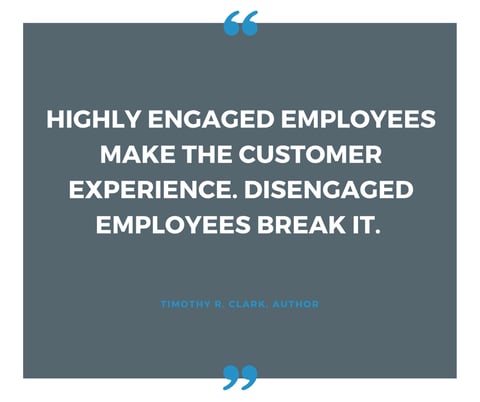“Many companies continue to delay adoption of a Voice-of-Employee program. Why?”
From encouraging two-way communication between employees and supervisors to increasing trust and confidence in leadership to uncovering specific actions that can increase retention of key talent, a Voice-of-Employee program can offer many advantages. Furthermore, a Voice-of-Employee program can deliver tangible value for the organization as showcased by Gallup’s research that states companies with highly engaged employees have nearly four times the growth rate compared to organizations with low engagement scores.
Yet, despite this evidence, many companies continue to delay the adoption of a Voice-of-Employee program. Why? Some are unsure where to start. Others don’t feel they have the internal resources or lack the time needed to devote to this initiative. It’s time to throw these excuses out the window.
Knowing what employees want, need, or expect is just as important as measuring customer satisfaction. Here’s why:
Voice-of-Employee Programs Contribute to Higher Employee Retention Rates
There’s a saying, “people don’t leave a job, they leave a boss.” In other words, a primary driver of disengagement is the dissatisfaction employees have with direct supervisors. This notion rang true for an acquaintance who was his company’s top sales performer. Up for a promotion, he asked his CEO, “Will Bob remain my supervisor?” “Yes,” said the CEO. “Here’s my resignation letter.” I bet that CEO was stunned!
How can you avoid a similar scenario and retain top talent? Start with an Employee Net Promoter (eNPS) survey. While relatively short compared to other employee surveys, the Employee Net Promoter Survey measures a person’s likelihood to recommend your company as a place to work and it offers high-level insight into the factors impacting employee sentiment.
Additionally, using Employee Net Promoter Score as a yardstick for measuring employee engagement can help illuminate the extent to which certain factors such as the culture or opportunities for advancement contribute to your employees’ positive or negative feelings.
Keeping your finger on the pulse of employee sentiment by tracking changes in Employee Net Promoter Score over time can be a simple place to start to help raise awareness of brewing employee frustrations. Armed with this information, opportunities for negative surprises can be reduced and efforts to retain top talent can be more tailored.
Voice-of-Employee Programs Lead to Greater Organizational Alignment
Do employees feel there are obstacles that prevent them from delivering an exceptional service experience? Are they satisfied with career growth opportunities? Does the C-Level team agree on the characteristics that define an engaged employee?
Aligning your company to the needs of your workforce requires that you understand employees first. Employee engagement programs can help you make informed decisions about what employees truly value. One example is the benefits you offer. Some employees may care about working virtually; others may want a 401k match. Other employees may want schedule flexibility.
Bottom line – don’t make decisions in the dark. Learn what your employees want, how they feel, and what they value before you make any decisions.
Voice-of-Employee Programs Spur Customer Loyalty

Strong employee engagement not only reduces the costs of employee turnover, it is an important ingredient in driving customer loyalty. And there are many well-known companies such as Zappos and Southwest that embrace this concept.
How can you foster employee engagement for happier customers and more Promoters? Communicate with employees on a regular basis. Ask for feedback in the form of an Employee Opinion Survey. Empower employees by giving them the autonomy to make decisions regarding the customer experience. Provide ongoing coaching, training, and education so they have the tools to succeed. Celebrate achievements on both a company and individual employee level.
Be sure to check out the Harvard Business Review article entitled “Putting the Service Profit Chain to Work.” It provides more proof of the relationship between employee loyalty and customer loyalty.
We’ve entered into an era where people are looking for more than “just a job” – they are seeking an environment where their personal achievement is aligned with the success of the organization. If this is accomplished, you’ll be rewarded with more productive employees, better quality of work, and increased customer satisfaction, which translates into profitability.
Provide Assurance of Confidentiality
One final consideration – be sure to give your employees the assurance of confidentiality. A third-party consultant, such as Satrix Solutions, can ease the fears of employees so that the feedback received is candid and constructive.
Nurturing a culture of employee engagement is a clear competitive advantage for your organization. So don’t neglect how your company’s reputation is perceived by one of your most valuable assets – engaged employees.

